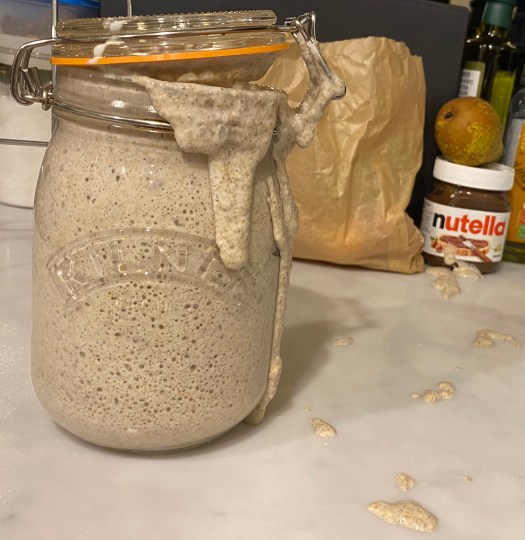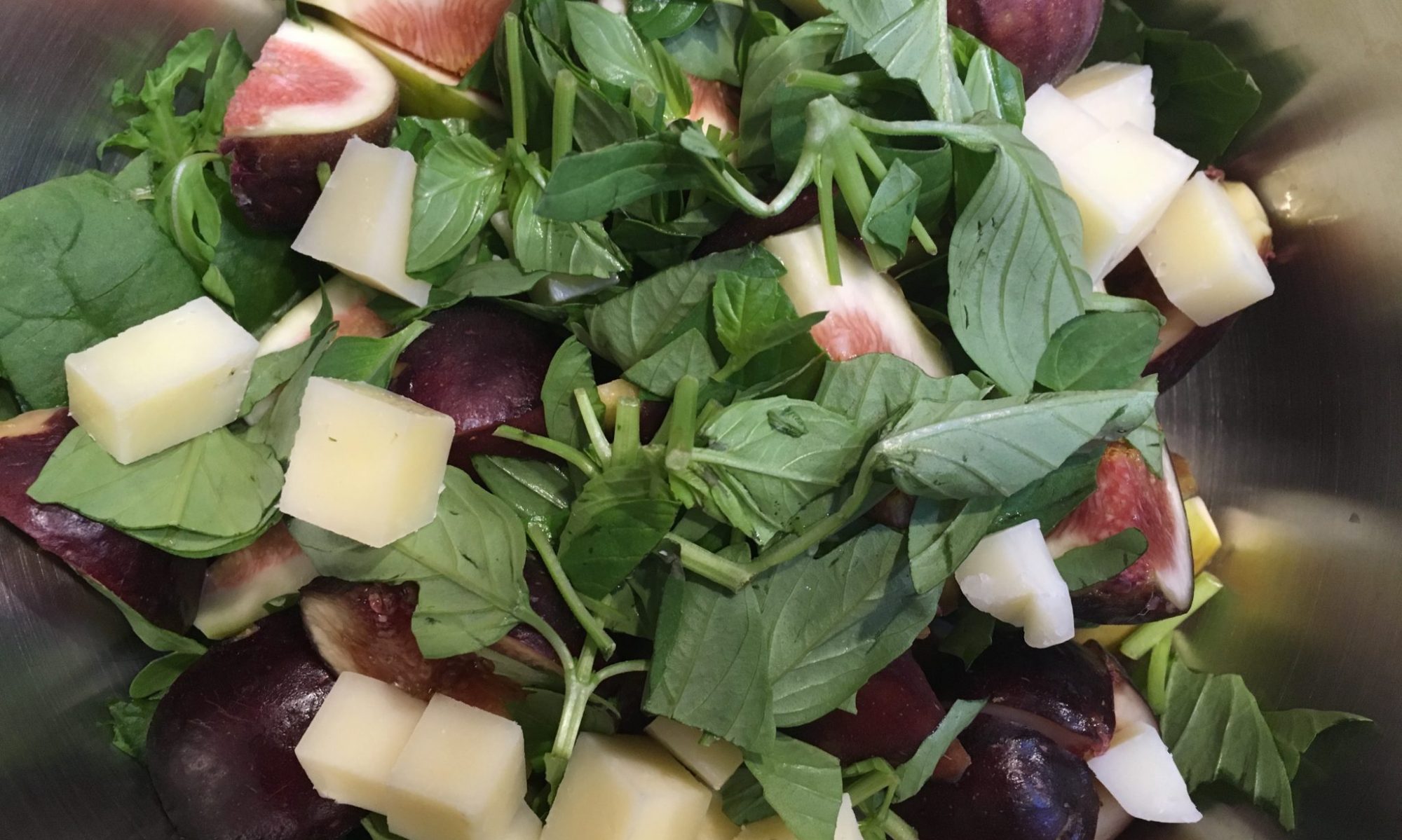I was reading about how wine is produced and it struck me that fermentation is involved in many products I enjoy.
Note: this will probably not be a TOTALLY SCIENTIFICALLY ACCURATE article, because my engineering degree is in Computer Science and I did not study much Biology (but I did study Chemistry!). Regardless, I wanted to share the patterns I’ve noticed, because I found them so interesting!
At its core, fermentation involves using microorganisms to bring “desirable changes” in food products. So instead of using “raw” chemical reactions, live organisms will do the heavy work. The role of humans in this case is to facilitate the process taking place by making sure that the environment is optimal for the right organisms to thrive, and inappropriate or downright hostile for unwanted organisms, so they aren’t allowed to flourish and spoil the resulting product.
There are two main types of organisms involved:
- Yeasts: The most common ones convert sugars into alcohols and carbon dioxide. This is essentially how wine and bread are made (the alcohol in bread evaporates when you bake it). In the “TOP” of helpful yeasts is Saccharomyces cerevisiae.
- Bacteria: These commonly convert sugars into acids. They are a key ingredient for making yoghurt and cheese. You might have heard of Lactobacillus!
But fermentation doesn’t normally involve one type of organism exclusively; for example both yeast and bacteria are involved in sourdough bread and wine making. Using more than one type of fermentation helps achieving more complex flavours and other desirable outcomes.
As the input matter undergoes changes via these metabolic processes, its properties (pH, amount of alcohol and sugars, temperature, etc) change, and the population of each type of organism will expand or shrink accordingly in response to these varying conditions.
For example, the S. Cerevisae yeasts easily metabolise sucrose but not so much lactose, and they might find it hard to stay alive in a highly alcoholic environment or if there are no more sugars for them to feed on—both sucrose and lactose are sugars. In contrast, some bacteria do thrive in an alcoholic environment as they metabolise ethanol (an alcohol) into acetic acid. And other bacteria break down acids into other compounds. And so on!
Thus it’s likely that only one microorganism will be the most active at different steps of the process, although other microorganisms can still be some somewhat active, but at a much smaller rate.
It is also very important to avoid non-desirable organisms from thriving. This can start with something as simple as basic hygiene: boiling and cleaning surfaces using soap or applying other products such as sulphites. Other actions that can be taken are carefully controlling exposure to air, altering the temperatures (either lowering or increasing them) to favour ranges that certain organisms prefer, changing the composition of the environment (e.g. adding acid or alcohol), etc.
It’s helpful to simplify these processes as imagining only one type of fermentation taking place at any given moment, and focusing on what are the optimal conditions required for that step to succeed.
And since each input material has a different composition (i.e. grape juice is not the same as milk or dough), different types of fermentation might take place in a different order.
Here’s a few different products that are fermented and the steps that are involved:
Yeasted bread
Note: I’ll talk only about bread that has a leavening agent to create bubbles in the dough via fermentation—unleavened dough could maybe undergo some other type of fermentation if left to its own devices for a long time, but that doesn’t normally happen: it’s baked earlier than that! And I won’t cover leavening agents such as baking soda, as those aren’t strictly fermenting but more of a chemical reaction where the soda reacts with the moisture in the dough when heated up, and expands.
Yeast is added to a mix of flour and water, and then left to “rise”… which could also be called “ferment”. During this process, the yeasts will start eating the sugars in the dough and convert them into alcohol and carbon dioxide (CO2), in a process called alcoholic fermentation. It’s the CO2 that creates the bubbles in the dough (and thus contributes to the volume in the bread).
And as I mentioned above, the alcohol evaporates when baking! You won’t get drunk from eating bread only 🙂
Sourdough bread
Now this is slightly different from yeasted bread. Instead of using a commercially available dose of yeast, we use what is called as the sourdough starter, which is a solution made of flour and water that creates a “culture” of wild yeasts and almost always lactic bacteria over various cycles of “feeding” to encourage the right culture to develop.
Because there are two (or more) types of microorganisms involved, sourdough bread can look, behave and taste quite different from yeasted bread.
Yeasts in a starter are somewhat slower to get going than yeasts from commercial yeasts, thus the fermentations commonly (and slowly) take place in this order:
- Lactic acid fermentation: the bacteria transform sugars into lactic acid, acetic acid and ethanol, plus aromatic residues and small amounts of carbon dioxide. Bacteria can also break down some starches (long chains of sugars) in the flour for the yeasts to consume, plus there are other processes that can take place and help improve shelf-life for the bread, but I won’t mention them here. In summary, the bacteria make it easier for the yeasts to perform the next fermentation step.
- Alcoholic fermentation: the yeasts transform sugars into alcohol and carbon dioxide.
You could say this is similar to normal yeasted bread, as in “we also create CO2 for volume”, but with an additional fermentation that provides extra aromatic and improved texture properties.
Wine
At a very high level, the fermentation starts with the alcoholic fermentation, with yeasts converting the sugars from the grapes into alcohol and carbon dioxide.
The fermentation can then be stopped by various methods, for example: mechanically filtering the wine to remove the yeasts, bringing the temperature down for a short period of time to kill the yeasts, or adding more alcohol or sulphites.
Alternatively, some wines can undergo another step called the malolactic fermentation. In it, lactic bacteria (already present or deliberately added with “inoculation”) convert malic acid into lactic acid and carbon dioxide.
This can give the wine some dairy notes and make it feel more rounded, as lactic acid is more palatable and less harsh than malic acid, but this fermentation is only suitable when a certain amount of malic acid in the grapes is present, and it’s normally avoided when using aromatic grape varieties as it might reduce the floral aromas.
Wine can also undergo other transformations but I don’t think they’re fermentations strictly speaking, so I won’t mention them!
Kefir
Kefir is a somewhat sour, sometimes fizzy, milk based drink.
Milk is fermented using kefir grains, which are a “three-dimensional microcolony” of bacteria and yeasts, which to the naked eye looks like cauliflower florets.
There can be a lot of different types of organisms and strains here, but our friends the Lactobacillus and Saccharomyces cerevisiae are the usual suspects.
First, lactose [and lactic acid] fermentation take place. Lactic acid bacteria break down lactose from the milk into lactic acid. Other bacteria might break down the lactic acid in turn, which can give the kefir a buttery, creamy flavour.
As happens with sourdough cultures, the yeasts take a bit to get started, but they eventually start the alcoholic fermentation and convert lactose into alcohol and carbon dioxide. This is what makes the kefir go fizzy!
Kombucha
This is a fizzy tea based drink, created by fermenting sweetened tea with something called a “SCOBY”, which is the acronym for “Symbiotic Culture Of Bacteria and Yeast” (sadly, it has nothing to do with a goofy dog and people with masks pretending to be a ghost!)
It’s a very similar concept to kefir grains, but instead of looking like cauliflower florets, a SCOBY looks more like a layer of jelly goo which sits on top of the liquid you’re looking to ferment.
The order and types of fermentations is also different:
First, alcoholic fermentation will take place, as the yeasts start feeding on the sugars to produce the usual alcohol and carbon dioxide combo.
Then some lactic acid fermentation and ethanol metabolism might take place as bacteria convert alcohol into lactic acid, and Gluconacetobacter xylinus bacteria oxidise alcohol and convert it into acetic acid (also known as: vinegar) and cellullose, which contributes to the SCOBY having a structure rather than just being a bunch of separate organisms floating in liquid.
Fermented foods and health claims
Both kefir and kombucha are said to be “probiotics” because they might contain live cultures (i.e. bacteria and yeasts) and are thus meant to aid your digestive system because it’s said that the cultures will somehow help digest foodstuff in your stomach or somehow end up in your guts where they will reinforce your own bacterial army.
BUT I read this book (“Why calories don’t count” from Giles Yeo) that describes our stomachs as a pouch containing an extremely acidic solution (and I’m paraphrasing), as acidic as hydrochloric acid if I remember correctly, and I doubt anything can survive for long in such an environment, be it probiotic or not, as that is extremely corrosive with a pH of 0! ZERO! The acidest of acids! (Note: pH goes from 0 to 14).
I thus conclude that you should seek fermented food because they’re pleasurable to eat and drink or have good shelf-life qualities.
Also: I can’t stop thinking about the idea of carrying a pouch full of acid inside me.
And so many more!
This list barely scratches the surface of the universe of foods that can be fermented!
Without trying hard at all, I can think of things such as, obviously, yoghurt and other dairy products like cheese, and of course fermented vegetables such as sauerkraut and kimchi; then the trio of soy-based ferments that is soy sauce, miso, and the extremely odorous nattō (very sticky and fermented soy beans—certainly an acquired taste), and finally, but not least importantly, sake and beer, which can be quite interesting. Devvers can tell you lots about all of that (specially sake) if you ask nicely 🤓
Personally, I can’t but marvel at the fact that we humans have learned enough about these microorganisms to “encourage” them to do nice things for us!
And many of these can be experimented with at home, as you don’t need massive equipment or space. Maybe not wine or beer making (at least not in your average London flat), but fermenting vegetables or baking bread is totally within reach. It certainly feels like both a miracle and a science experiment to me. It’s fun!


